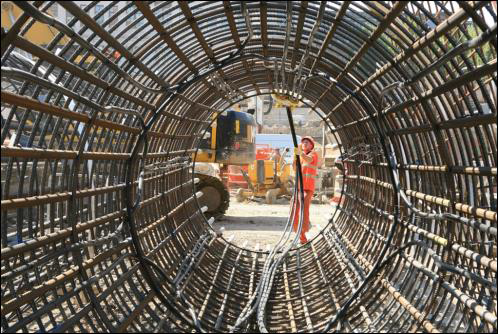
Energy Geostructures
Objective
The increased need for renewable energy sources has led to expansion of shallow geothermal applications for heating and/or cooling of buildings. The integration of heat exchangers in those elements of the structure that interface with the ground, such as foundations, tunnels and diaphragm walls, is particularly attractive because of the inherent cost saving involved in combining a required structural component with the harvesting of geothermal energy.
Thermoactive geostructures present the additional benefit of relying on localized resources (the ground) and therefore do not need additional infrastructural investments. By providing an alternative to fossil fuels and reducing peak demand from the grid, they also provide an attractive tool towards energy independence and distributed generation with no adverse impact on the environment. However, the widespread application of this sustainable technology is currently hindered by the large heterogeneity in the development and regulatory framework in European countries.
By sharing knowledge and experiences, the use of thermoactive geostructures will increase, especially in countries with less experience. The Energy Geostructures working group works to promote public awareness and confidence in this technique and foster advancement in knowledge through collaboration in Europe.
Important documents
The Energy Geostructures working group has been active in promoting the COST Action TU 1405 GABI (Geothermal energy Applications in Buildings and Infrastructure) that operated between 2014 and 2019.
Members
Contacts
Marco Barla +39 0110904824 marco.barla@polito.it
